The Catlins beckons as a road-trippers dream, where meandering roads weave together a rolling medley of picture-perfect landscapes and tub-thumping seascapes, fringed with high cliffs and lonely sweeps of vast golden-sand beaches, writes Mike Yardley.
This southeasterly swathe of the South Island is like a world unto its own, a kaleidoscope of dramatic coastline, bucolic meadows, ancient rainforests and heart-stirring waterfalls. Then there’s the wildlife, from startled sheep glaring at you on gravel-road detours, to lazing sea lions, perky penguins, playful dolphins and passing whales. This wind and wave bashed wilderness realm of the Great South is a riveting locale to embrace nature’s glorious and elements on a photogenic escape.
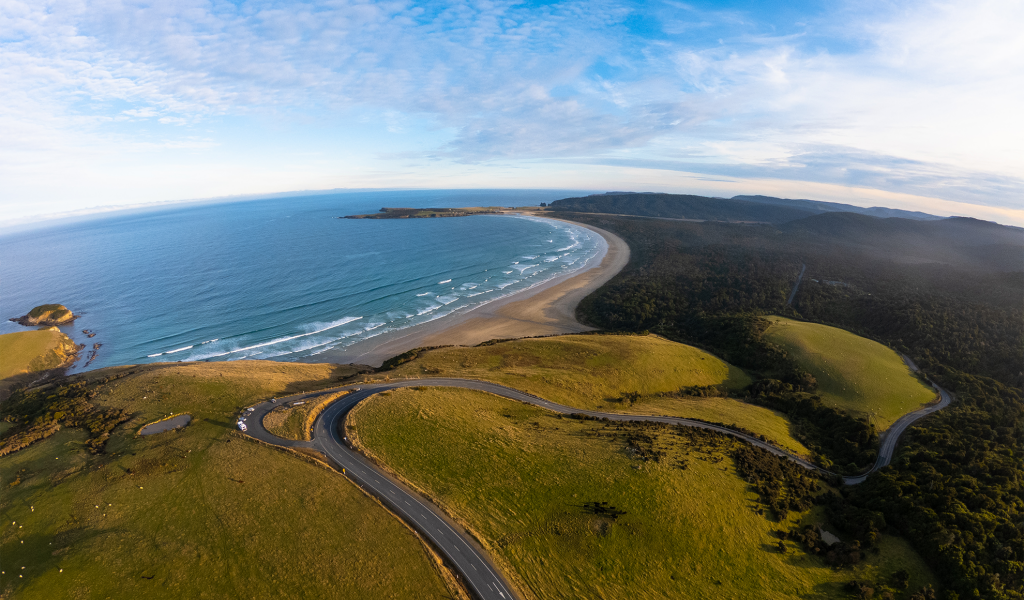
Skirting the South Coast, the rugged natural splendour of the Catlins and all its bewitching attributes is wedged between Invercargill and Balclutha. (Just follow the Southern Scenic signposts.) Deriving its place name from Edward Cattlin, he was a whaling ship captain who purchased a mammoth tract of the area, 5.5 million acres, for £30 in 1840. Apparently one of the five Māori chiefs he did the deal with signed the document with a drawing of his moko. Somewhere along the way, the district dropped a “t” from his surname. Cattlin also lost most of his purchased land, with the ruling New South Wales governor rescinding the deal and reducing Cattlin’s land possession to 227 acres. From Balclutha, gnarly and windswept Nugget Point is the first major sightseeing attraction on the touring route.
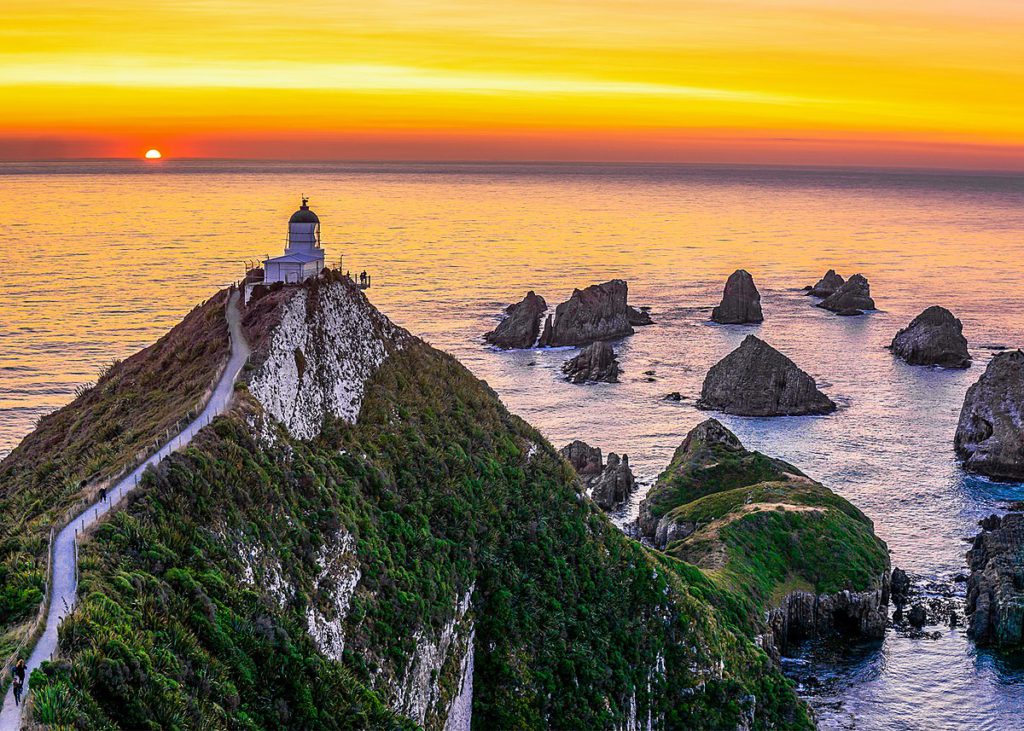
This spectacular spur bears an uncanny resemblance to a chunk of China’s Great Wall, delivering a cracking coastal panorama, with the roar of the sea, the endless ocean and the sheer cliffs on either side of the track. The well-formed walkway is a 30 minute amble, flanking the razorback ridgeline of Nugget Point. The walkway climaxes at the 1869 lighthouse, pinned to the jagged summit, and towering over New Zealand’s most dynamic marine mammal zone. The lonely lighthouse stands guard over the roaring ocean. You’ll spot numerous fur seals, elephant seals and sea lions snoozing on the rocks below you, doing convincing impressions of stranded driftwood, while the fingers of seaweed caress the sea. Adjacent to Nugget Point, blue and yellow-eyed penguins can be viewed late in the day, at the lovely little cove of Roaring Bay.
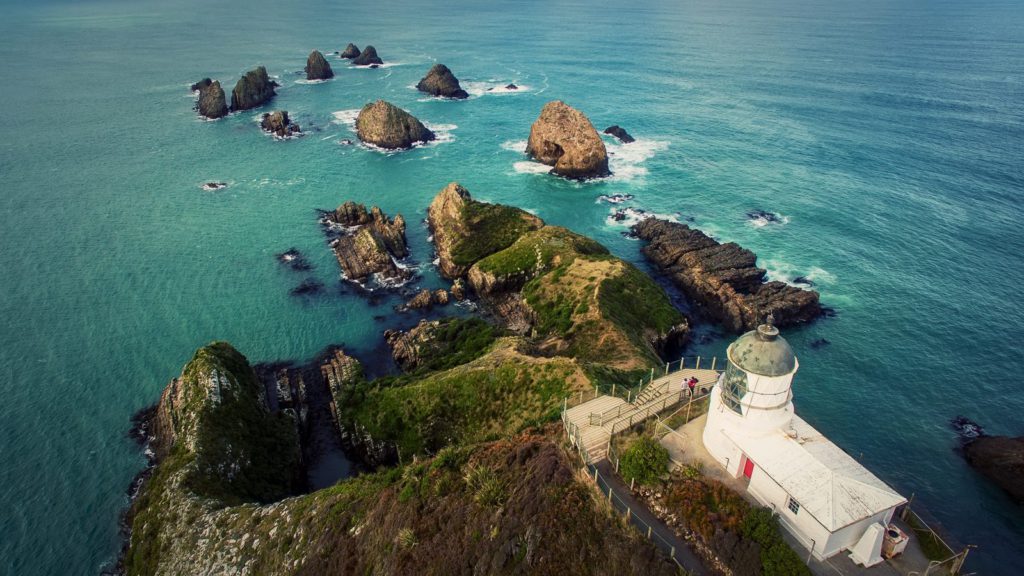
Shipwrecks abound on this coast and Surat Bay is named for one from 1874. They story goes that the captain of the Surat, a 1000-tonne three-masted iron sailing ship, was drunk when it ran aground. No lives were lost but the immigrants on board, at the end of a gruelling trip from Gravesend in England, lost all their earthly possessions to the watery depths.
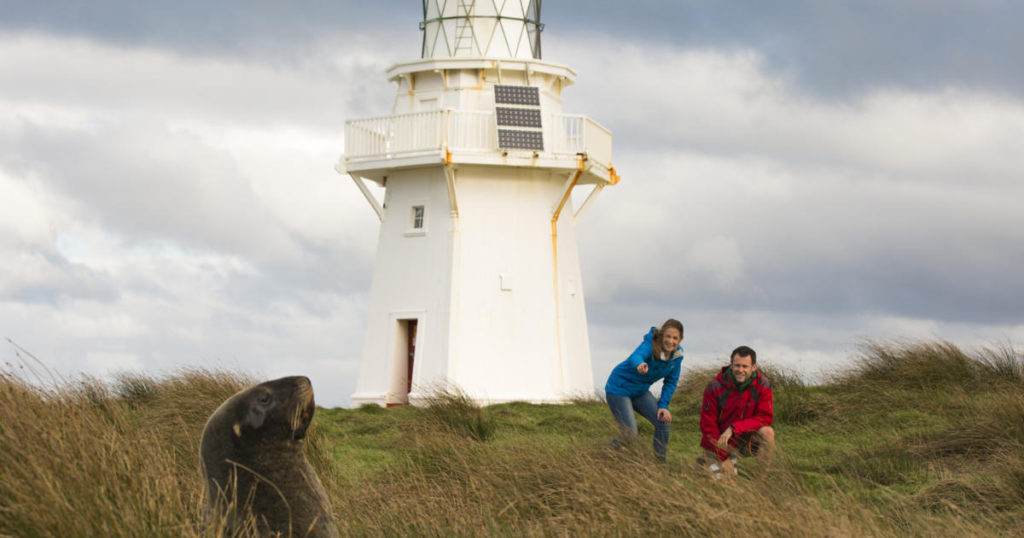
Jacks Beach is a beautiful coastal setting, also home to a delightful cluster of eccentric Kiwi cribs. From the beach, an easy 20 minute stroll across private farmland takes you to the dramatic Jacks Blowhole. Over 200 metres from the beach, the hole is 55 metres deep and the boom of the blowhole at high tide is thunderously impressive, particularly in rough sea conditions. In an area awash with waterfalls, Purakanui Falls, within a beautiful bush setting, would be my pick of the bunch.
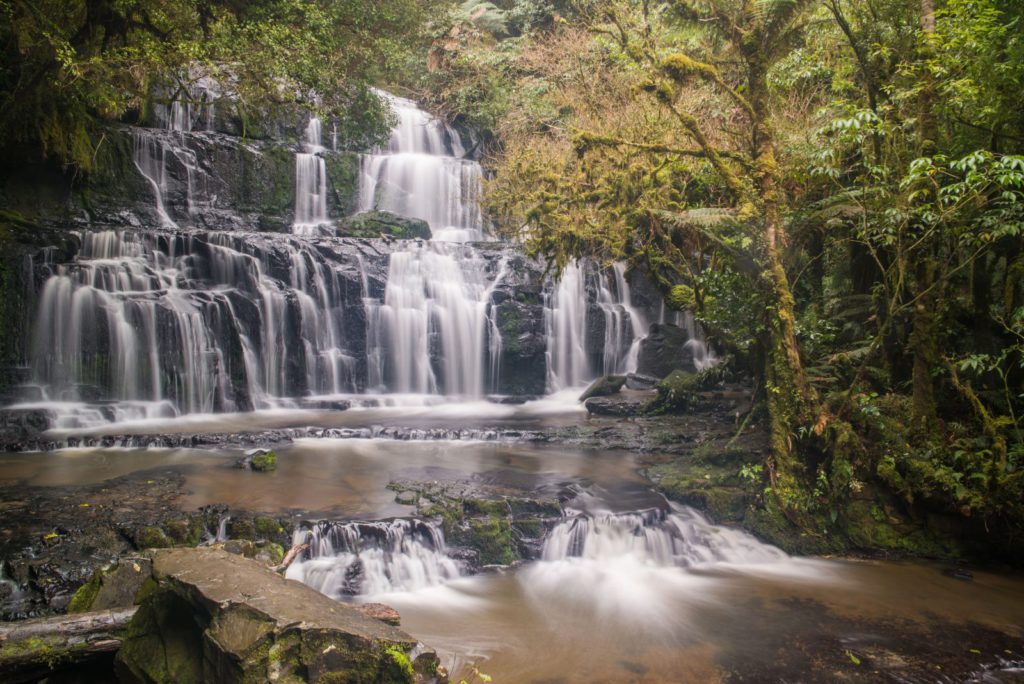
None of the Catlins’ falls are particularly high – so don’t expect to stumble upon the Niagara! But the dense and lush forest settings accentuate the splendour of cascading water. I visited the falls on a particularly wet day, which turbo charges the visual spectacle. 10km east of Maclennan, the walkway to the Purakanui Falls starts off Waikoata Valley Road. The track is a gentle 20 minute stroll, winding through a mix of silver beech and podocarp forest, climaxing with a sweeping view of the falls. Descend down the stream level viewing platform which provides a far more intimate spectacle of the three tiers of jet black rock that combine to make these falls so divine. My second favourite falls spectacle in the Catlins is McLean Falls, the region’s highest falls and just a 20 minute walk through enchanting rainforest.
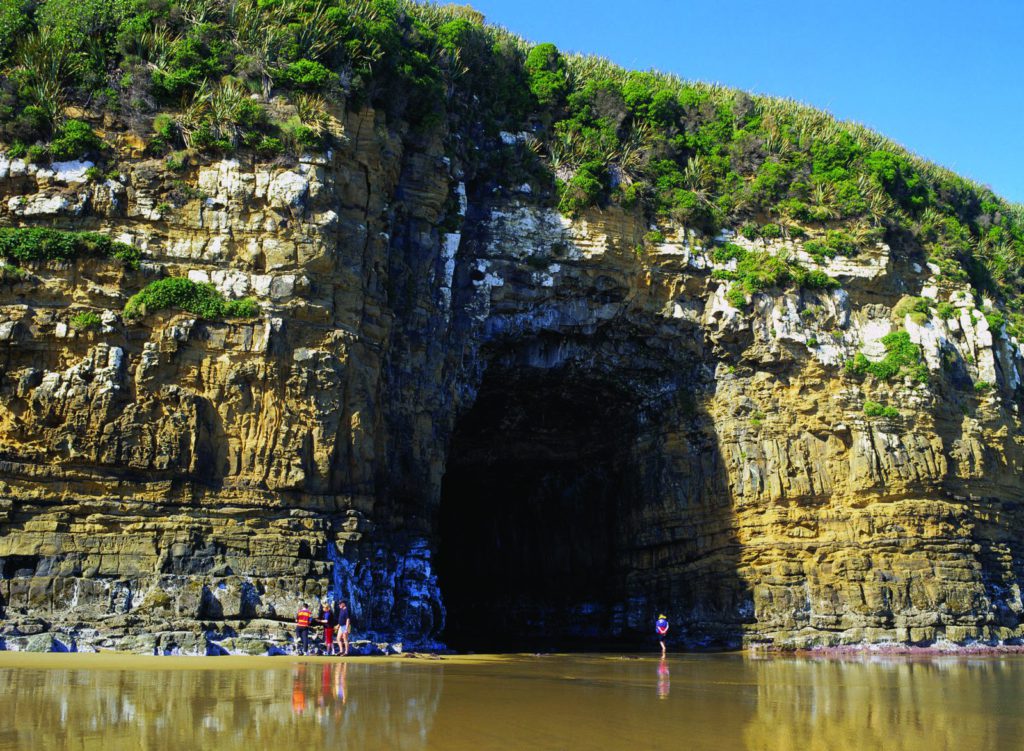
Cathedral Caves are a collection of spectacular sea caves, guaranteed to thrill. The main cave reaches a height of over 30 metres and some of the caves go deep into the cliff, so a torch is recommended. The caves are only accessible at low tide, so you’ll need to time your visit accordingly. The acoustics are incredible. Tide times are helpfully posted on the entrance gate, where a small cash fee is required, and the gate is normally closed if the tide isn’t conducive to visitors.
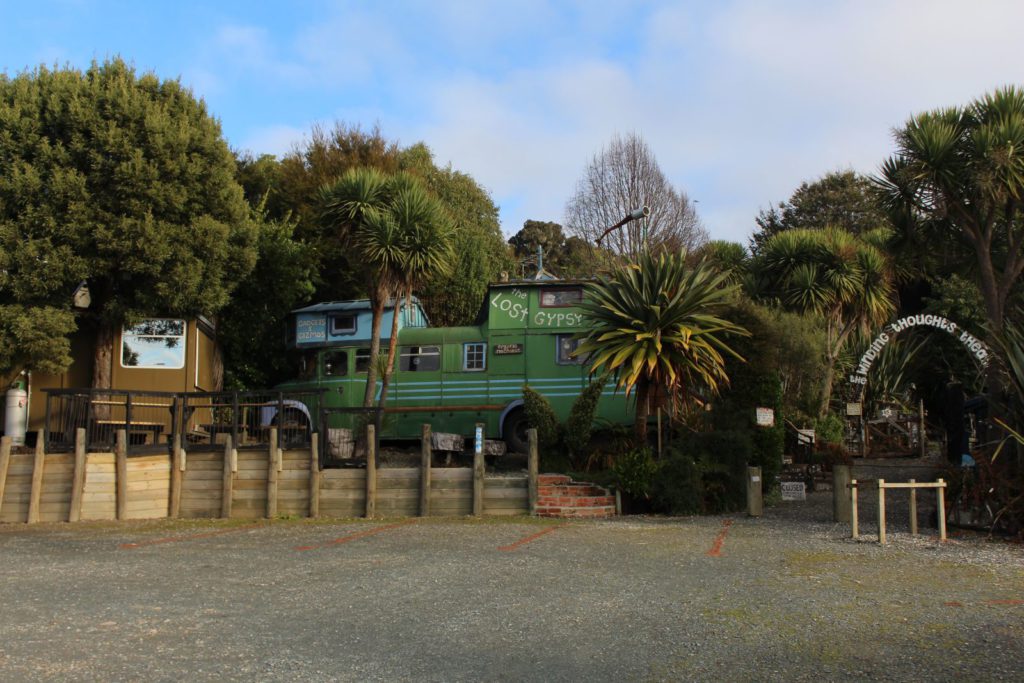
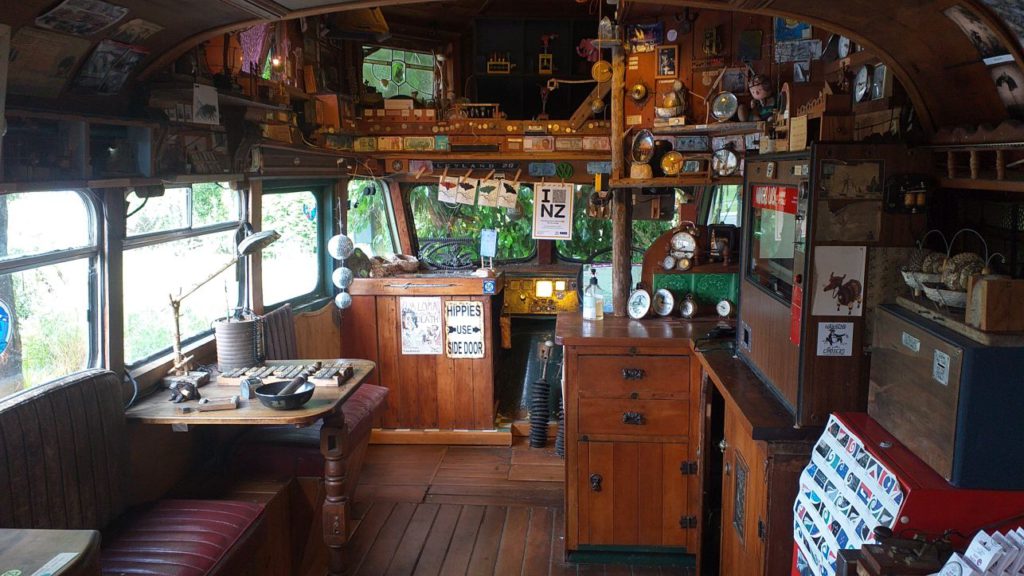
The main gallery is housed in a converted 1951 Leyland Comet house bus, while an adults-only gallery beckons in what Blair calls the theatre, where a carnival of even more extravagant creations await. Te Papa has been keen to get their dibs on Blair’s marvellous creations but he has resisted.
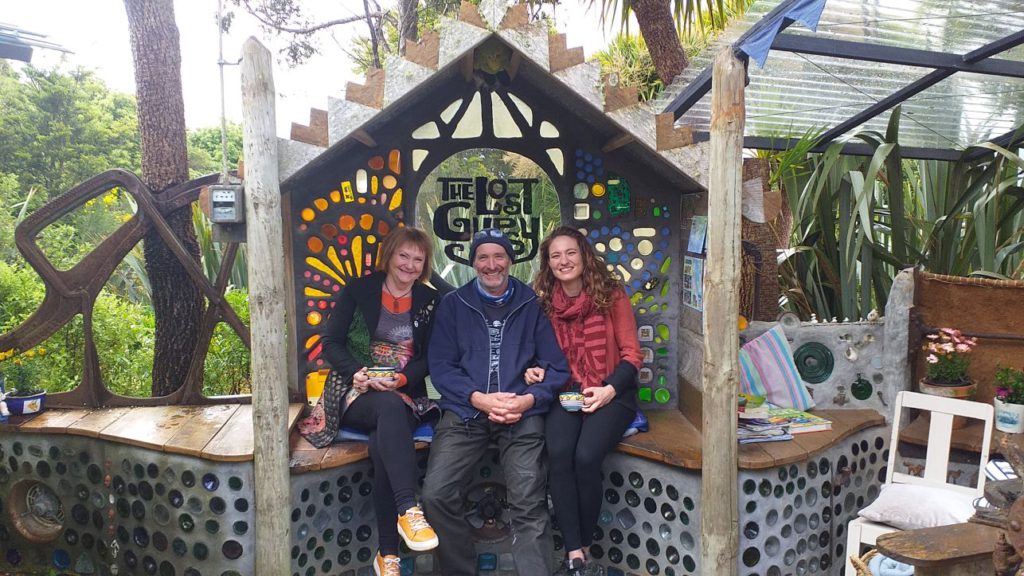
He’s planning a national tour next year. Be sure to stop by and prepare to be bamboozled by his wonderfully wacky works. Carol powers the neighbouring espresso caravan – and she makes the best mochas on the South Coast! As we chatted over coffee, a cloud of kereru burst out of the bush, turning on quite the spectacle.
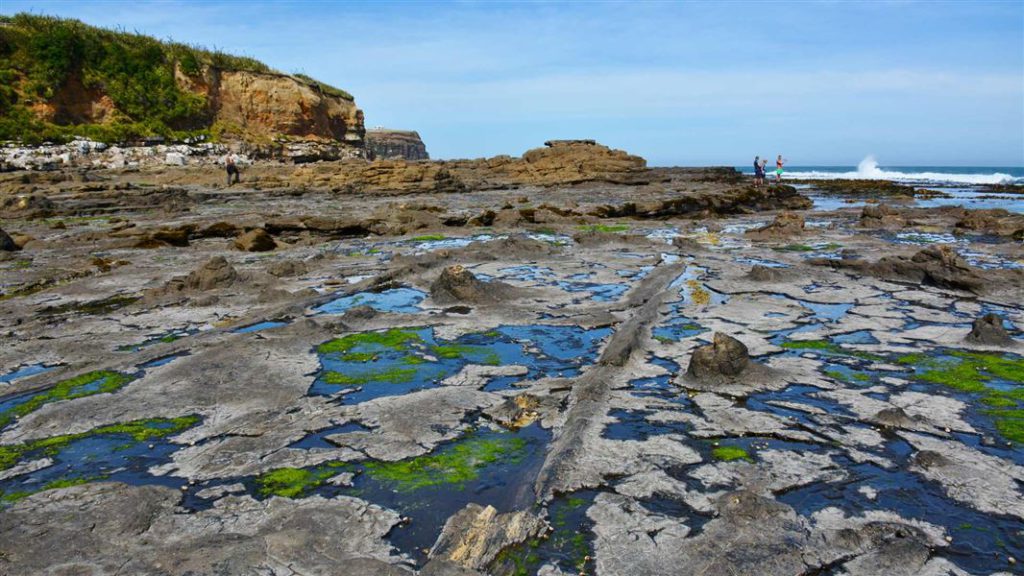
With your curiosity fully aroused, call into Curio Bay for nature’s masterful expression of might, power and magnificence. This is a most unusual coastal setting, over 180 million years old, and distinctive for the petrified tree stumps, trunks and fern imprints that are clearly identifiable on the bay’s rocky shelf. Once again, low tide is the best time to experience the novelty of this time-defying, ancient forest. I marvelled at this rare phenomenon of Jurassic-era trees, preserved by silica in the ashy floodwaters that submerged this forest in the debris field a volcanic eruption. The forest grew back only to be covered again by further volcanic activity. It is remarkable to think these trees stood before birdlife emerged in the world.
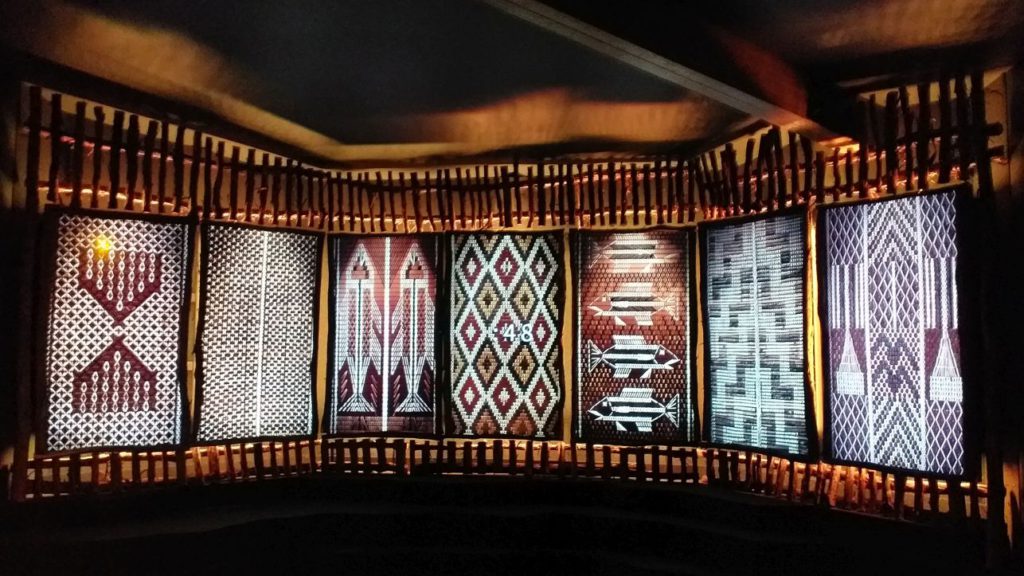
Curio Bay has been accentuated with the recent opening of the multi-million dollar Tumu Toka Curioscape. Their Gateway Experience is an interactive, state-of-the-art museum experience, with touchscreens and fabulous exhibits of that petrified forest.
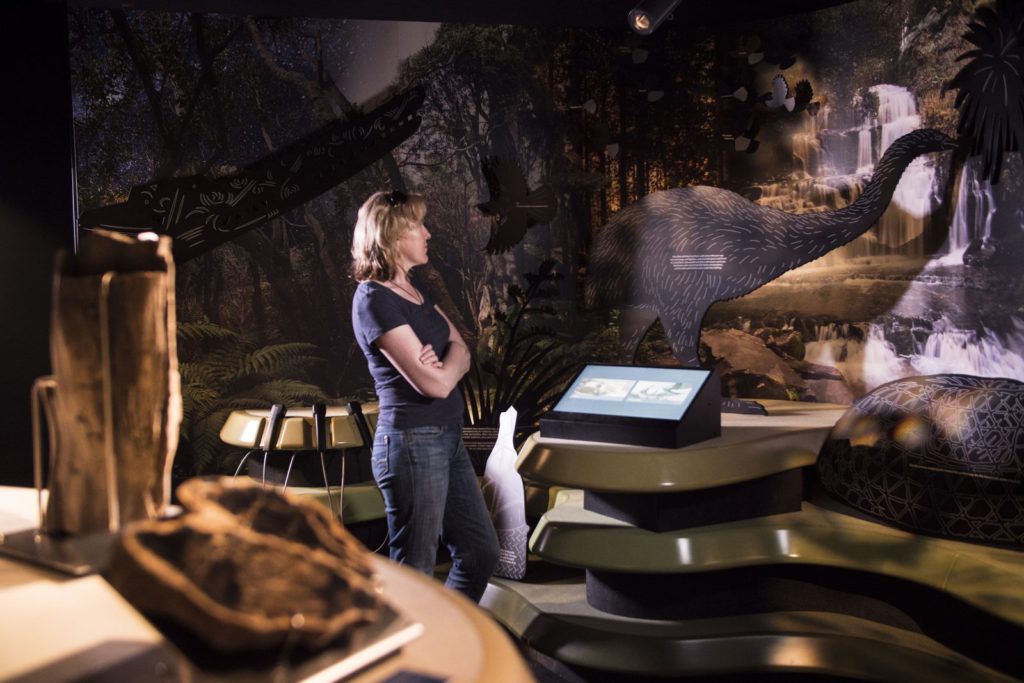
It costs only $10 per adult to enter the gallery and you’ll come away with a much greater understanding of the staggering forces of nature that have played their role in crafting Curio Bay’s appearance today.
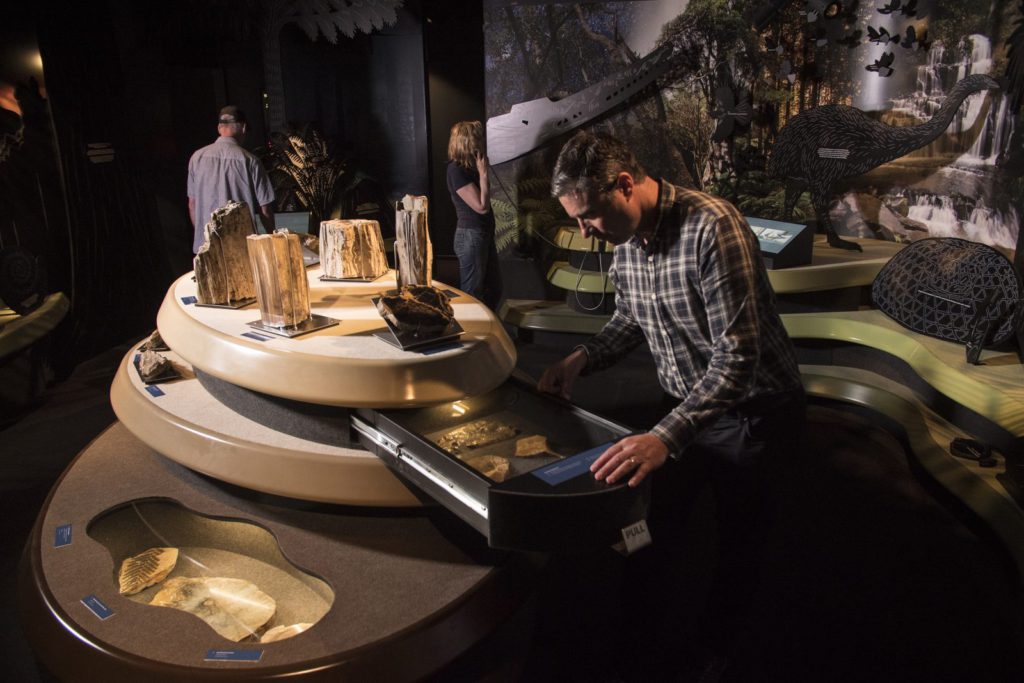
They’ve also got a great café. Curio Bay is also home to a colony of yellow-eyed penguins who will appear out of the surf late in the day. It never ceases to amaze how human-like some of their behaviours are, waddling out of the surf like shoppers in a mall.
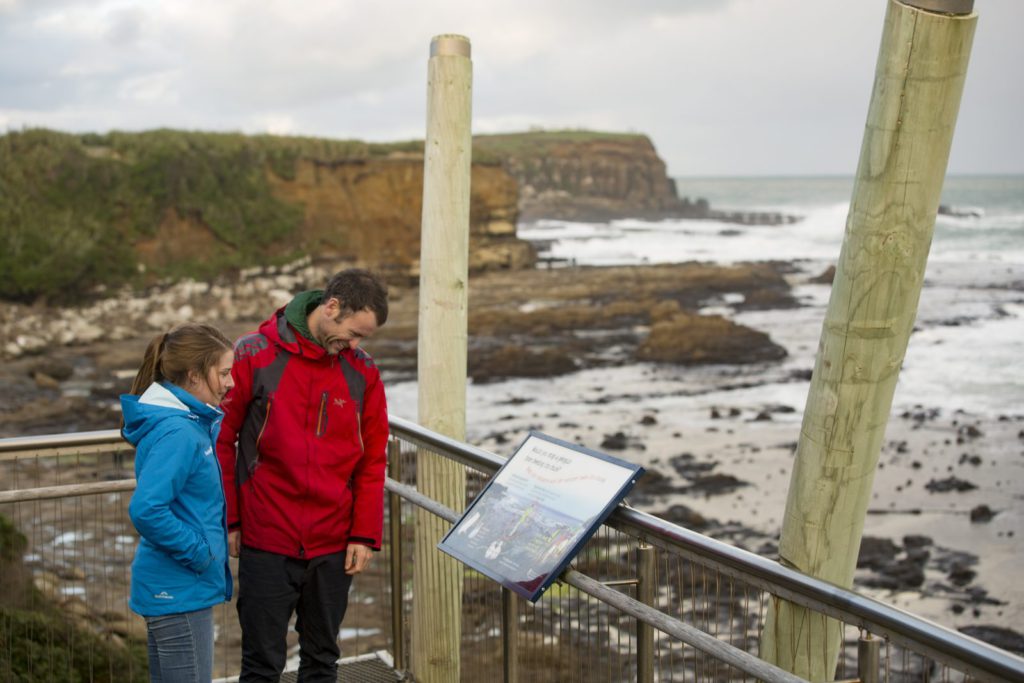
Further west, a melancholic mood awaits at the Waipapa Point lighthouse. A passenger steamer called the SS Tararua struck the reef off Waipapa Point, on April 29, 1881. It took 20 hours to sink but, with stormy seas, few could make it to shore on the lifeboats. Of the 151 passengers and crew, 131 were lost and it remains New Zealand’s worst civilian maritime disaster. Three years later, the lighthouse you see today was built. It was the last wooden one to be erected in New Zealand and serves as a poignant reminder to the wrenching tragedy.
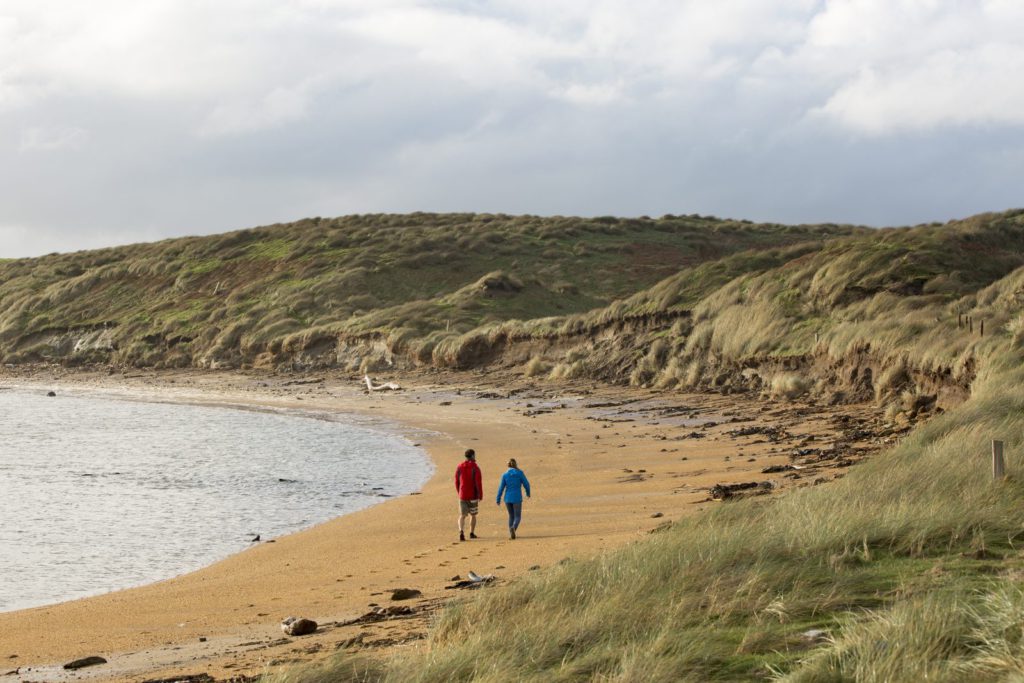
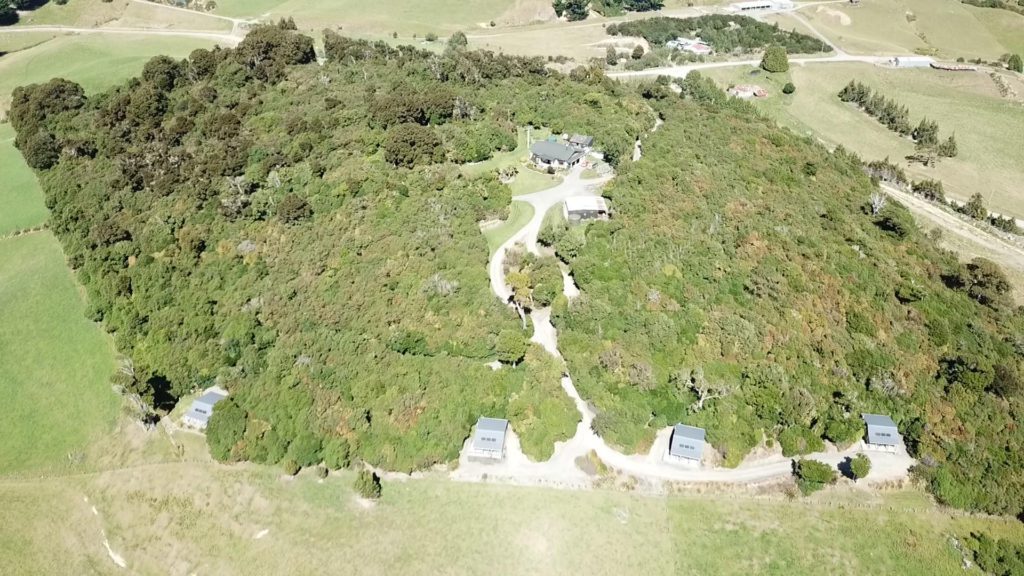
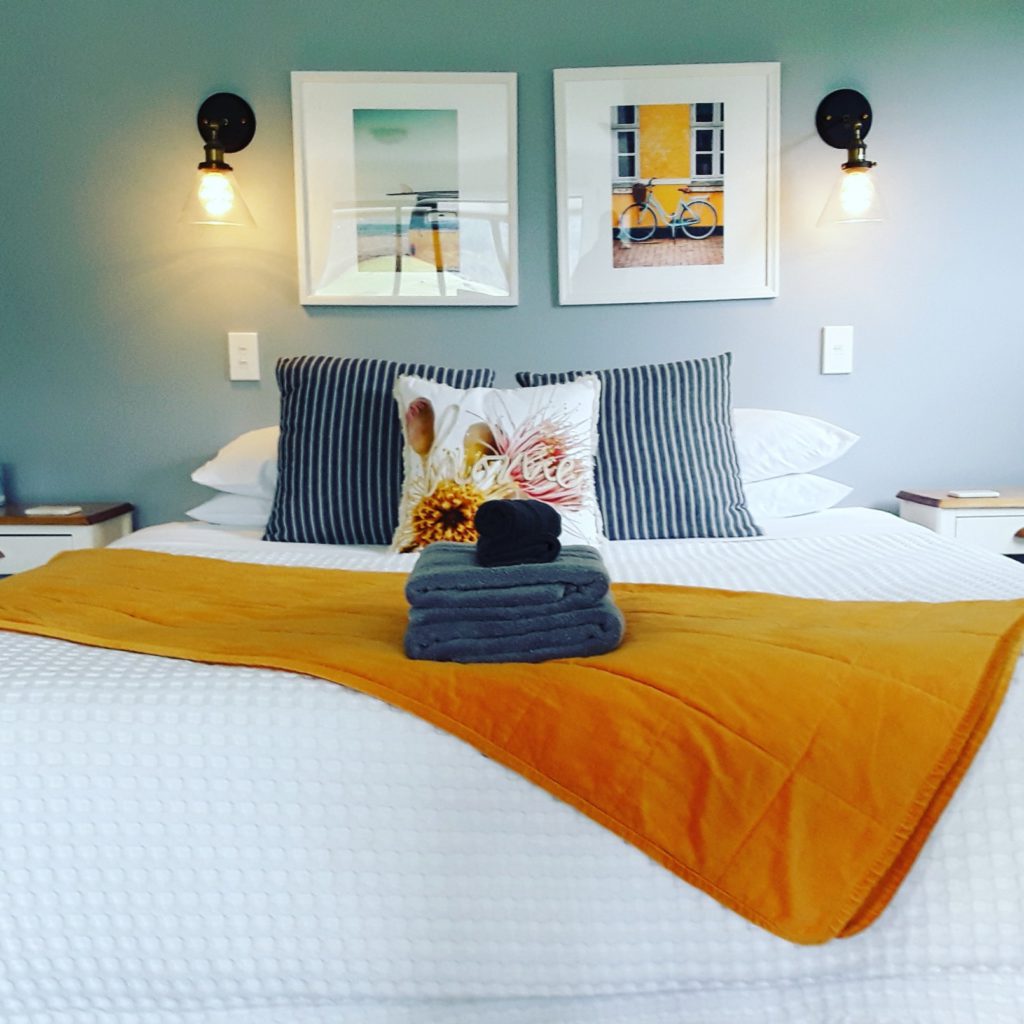
The eco cottages are designed for two people, but pull-down divans in the living area allow up to four people in a cottage with a curtain room divider. The cottages are TV and phone-free zones of peace and quiet, although I must confess I loaded up Sky Go on my laptop via the free wifi. You can book as a self-catered stay or as a Bed & Breakfast stay.
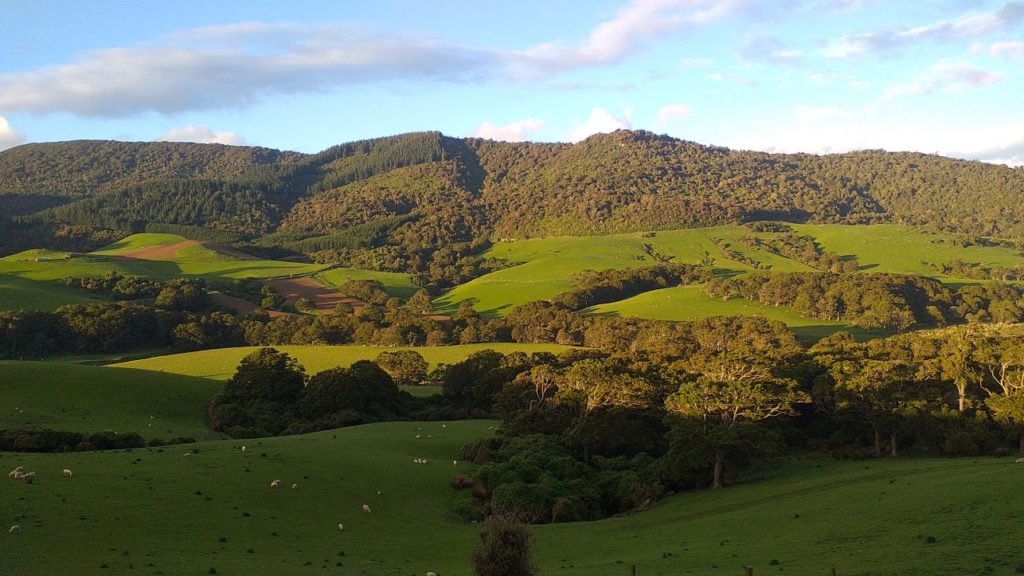
Secluded and tranquil, the wonderfully stylish and spacious self-contained eco accommodation cottages enjoy magical vista’s across the rolling pasture, set within the 8 hectares of protected forest reserve. I was lulled to sleep by baa baa lambs in the neighbouring paddock and the evening calls of the native birdlife, as the rolling hills were gilded by the slumping sun.
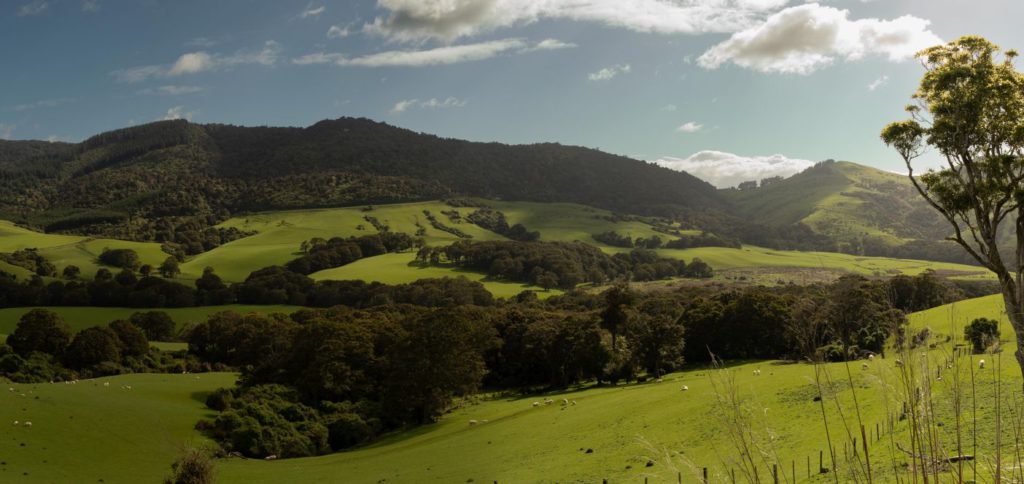
At day break, the dawn chorus was positively operatic. The park’s extensive trapping programme certainly keeps the stoats, rats, wild cats and possums in check. This dream location is a wonderful place to relax and rejuvenate the soul. Mohua Park offers 4 kilometres of natural walking tracks to explore like a frisky cub scout. Take in the Moss Garden sculptures, enjoy the native fauna and flora, including the majestic 500 year old Matai trees, mercifully protected by QEII Covenant. The cherry on top of the Catlins Mohua Park experience are the variety of guided tours Lyndon and Gill offer.
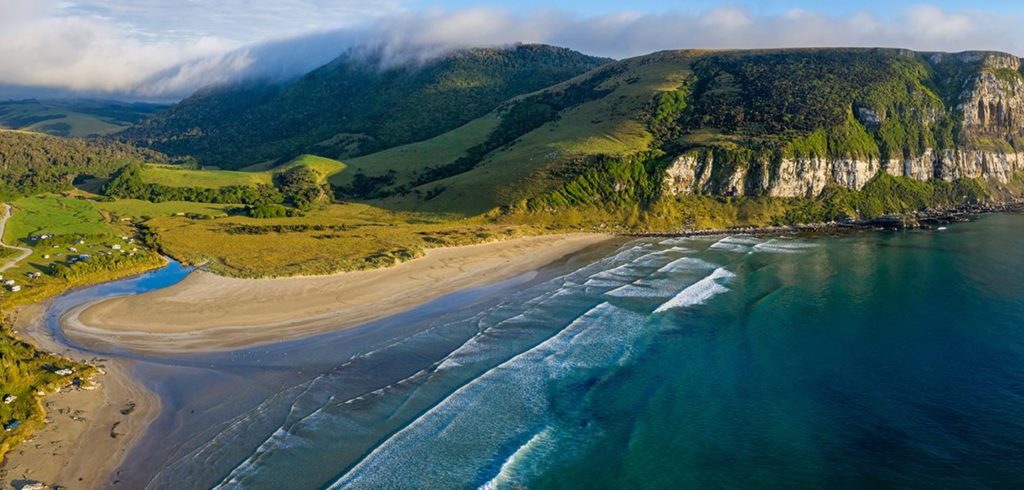
There’s the Sunrise Tour which includes seeing yellow-eyed penguins going out to sea from a private location, a swill of landmarks and points of interest, viewing of fur seals and sea birds. There’s the Beach, Bush & Waterfall Tour which encompasses a highlights parade of the district, including Cannibal, Purakaunui and Tautuku Bays; sea lion spotting, Lake Wilkie, Purakaunui, McLean and Matai Falls; and the magic of Nugget Point Lighthouse. I joined some fellow guests for Lyndon’s Coastal ATV Experience. It’s a rollicking ride in a Can-Am ATV, through private farming property at Tahakopa Bay on the Catlins Coast.
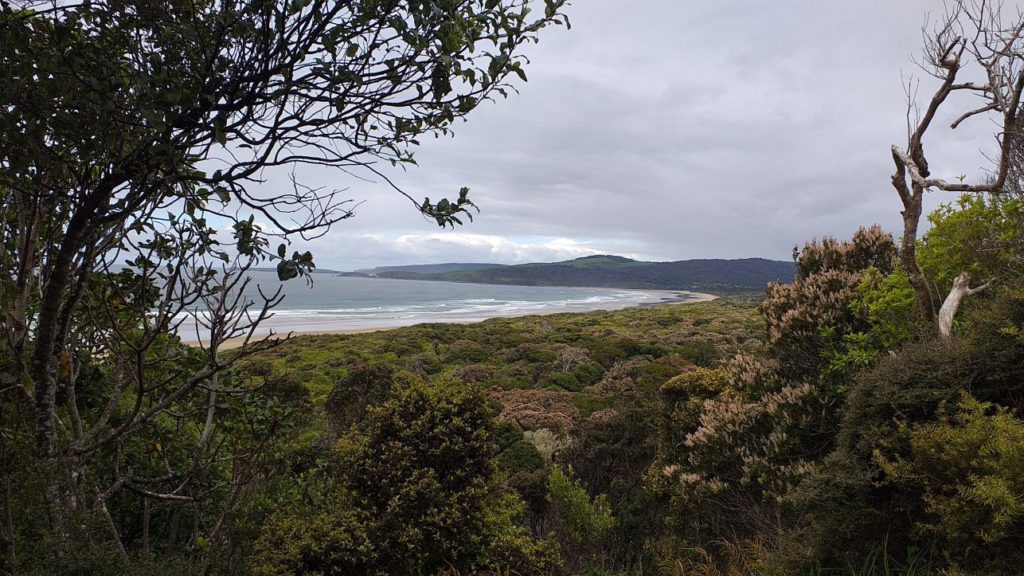
We blasted along the broad sweep of the sandy bay after admiring the sandstone rock formations on the shoreline and gazing up at the towering cliffs, all the way to Papatowai. Lyndon forlornly remarked how the yellow-eyed penguins are battling for survival on the mainland, with many of the chicks hit with a form of diphtheria in recent years. Then we toured the lush coastal farmland, right up close with the sheep and cattle heartily grazing on the lime-green paddocks. Like many farmers in these parts, regenerative farming is en vogue, with tracts of rainforest safeguarded alongside regenerating forest and vast native plantings.
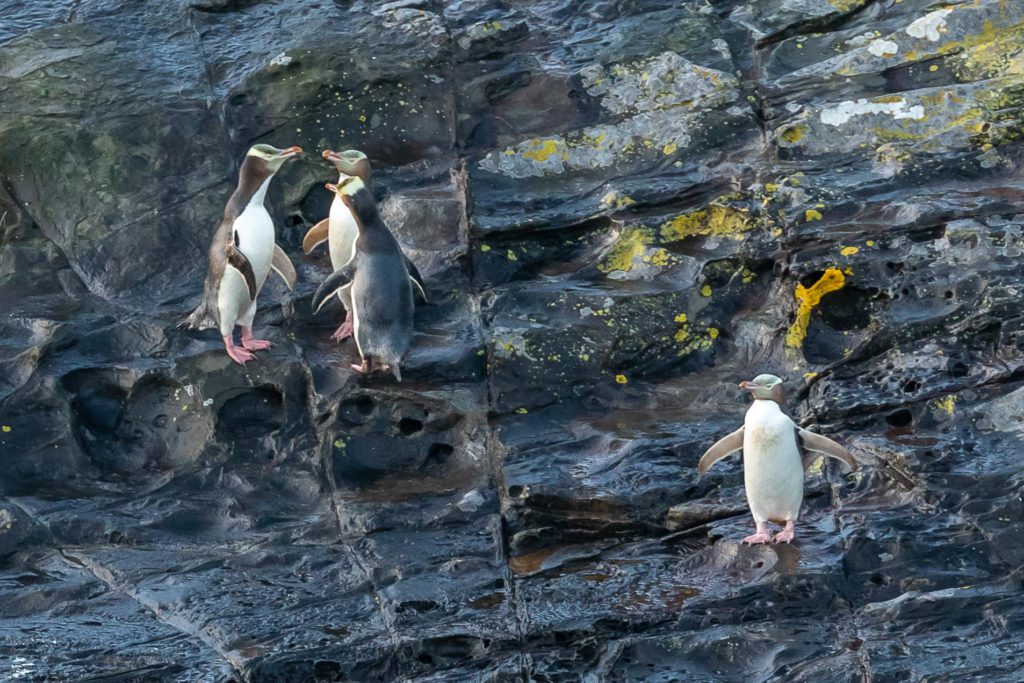
The kamahi trees were flowering radiantly. A thrilling frisson was when Lyndon took us right on top of those soaring cliffs in the trusty ATV, which made light work of the steep incline. We chuckled over the windswept macrocarpa trees, blasted by the prevailing southerly side-on, we frolicked like playful children in the rockpools down by Long Point and lapped up the wraparound beauty of this blessed pocket of New Zealand.
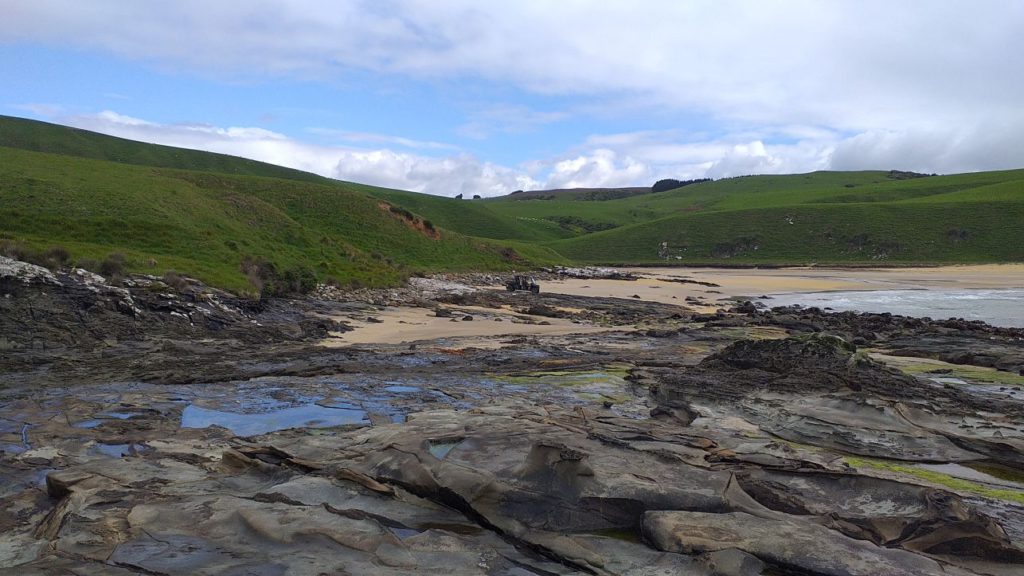
And Lyndon led us to an enchanting private waterfall that will take your breath away. Enjoy a blissed-out wilderness escape with the in-the-know professionals at Catlins Mohua Park. www.catlinsmohuapark.co.nz
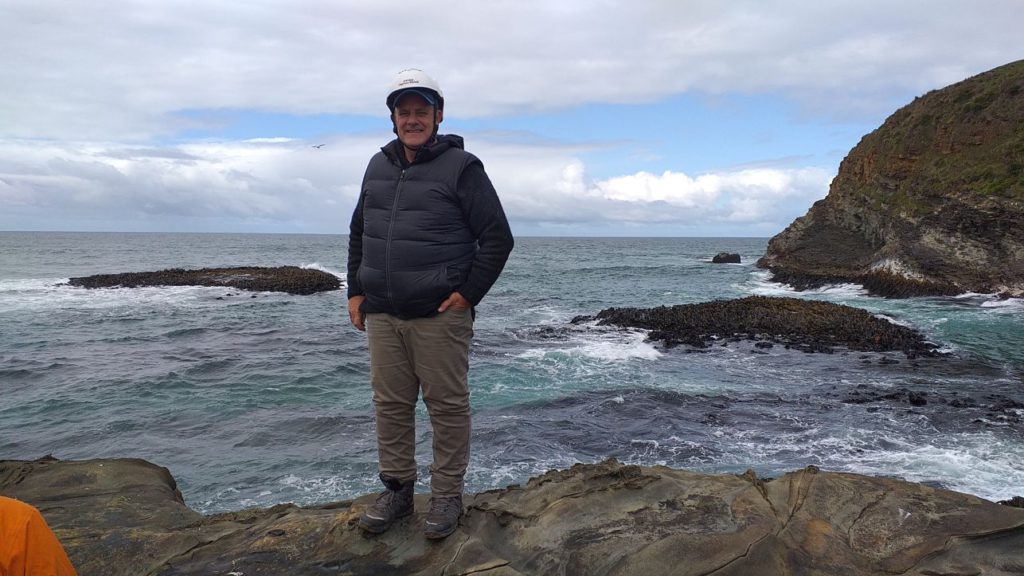
Planning a jaunt to the Great South? From our southernmost city of Invercargill to the wider treasures of Stewart Island, the Catlins, Gore, Western Southland and beyond, make your first stop the region’s official websites. www.southlandnz.com
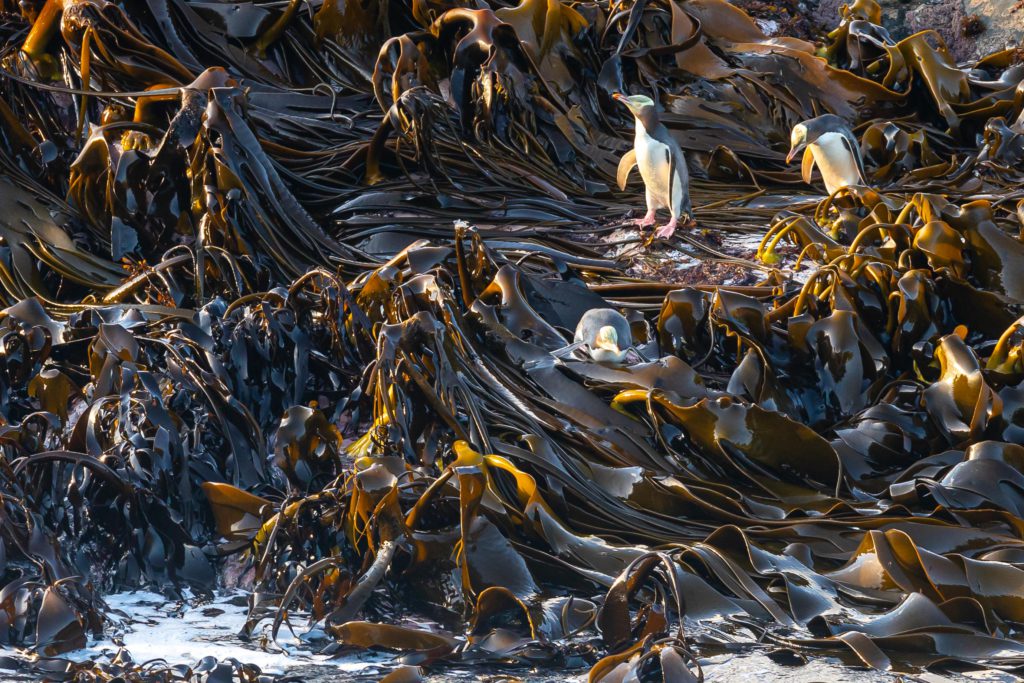

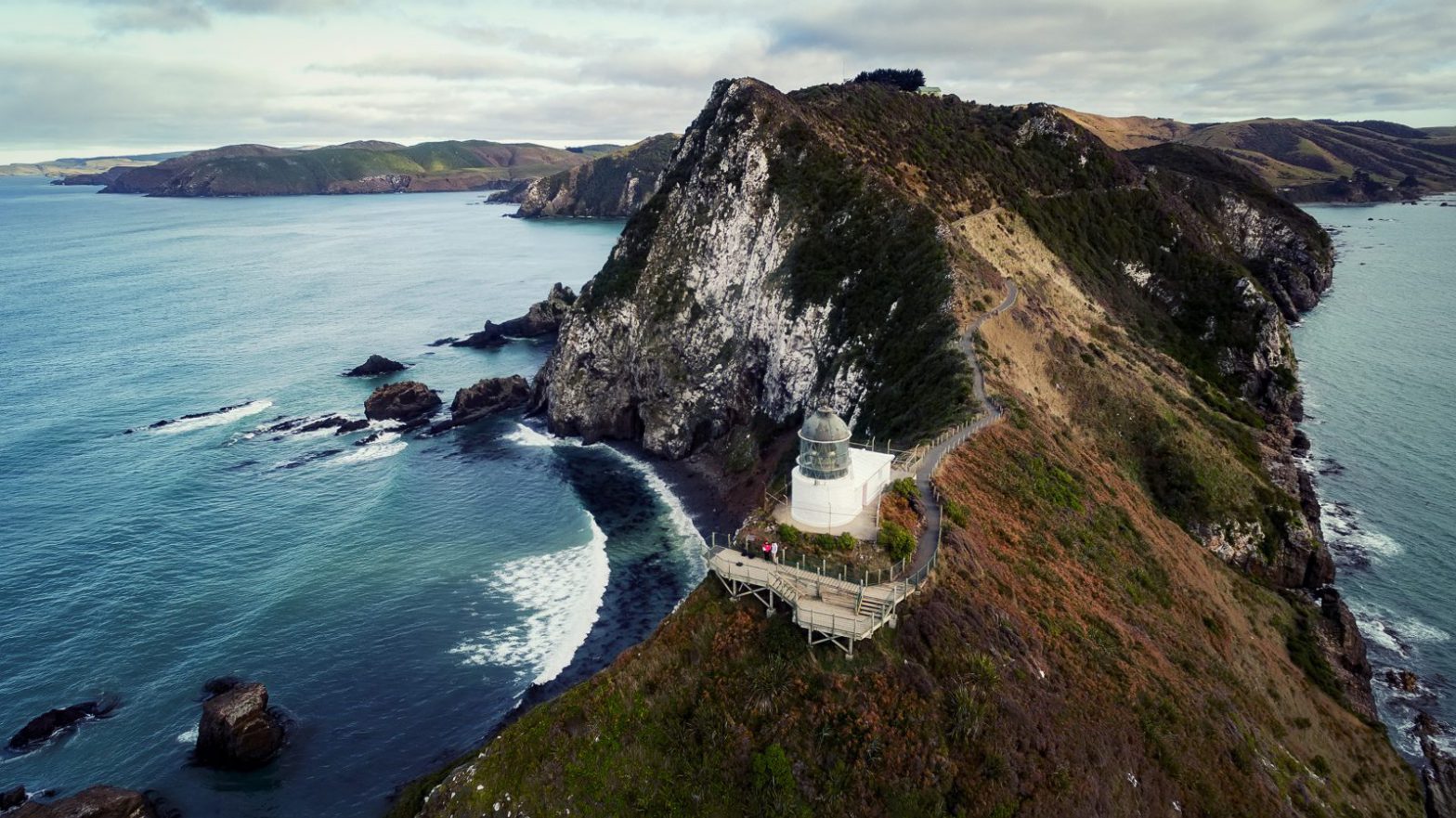

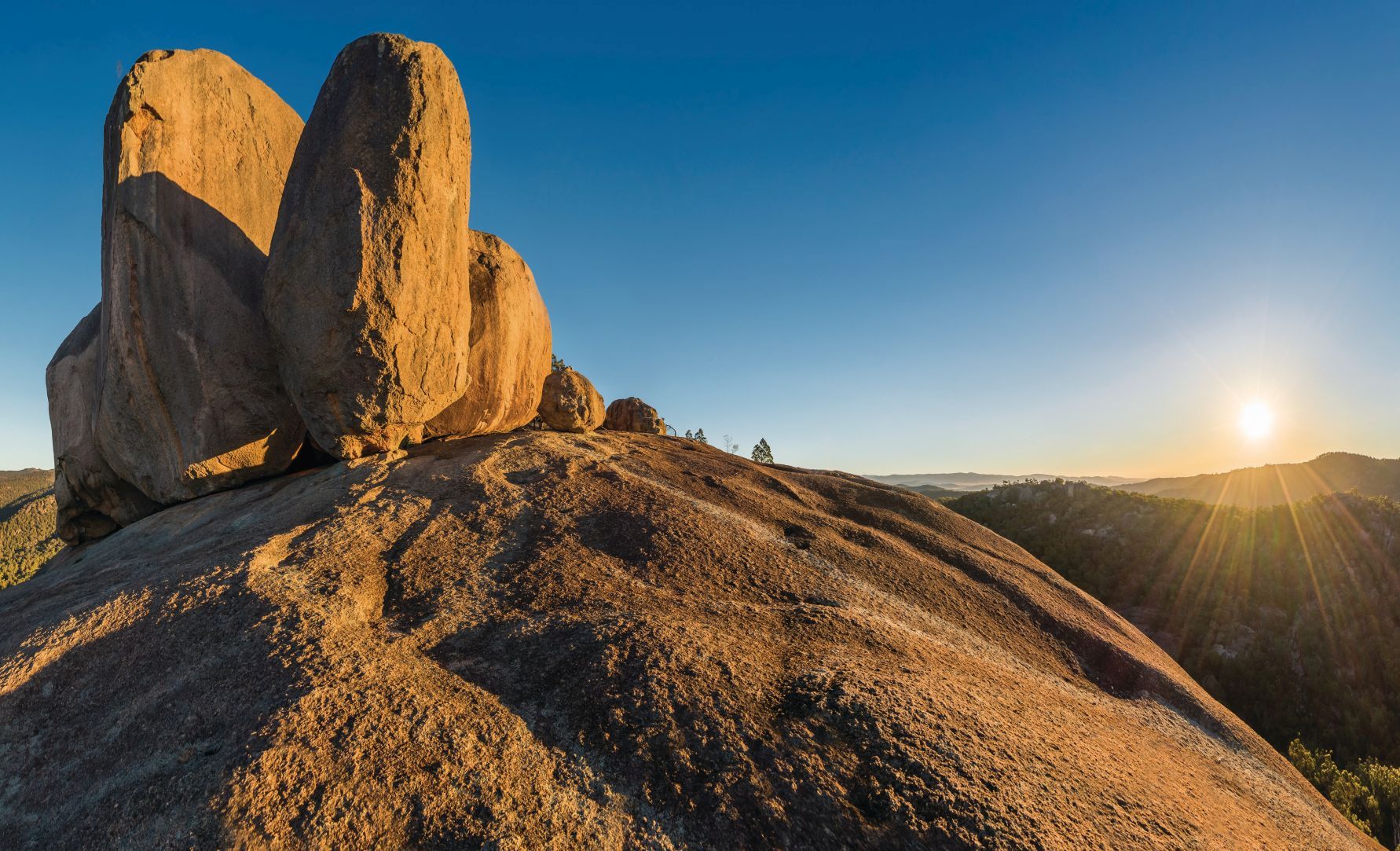
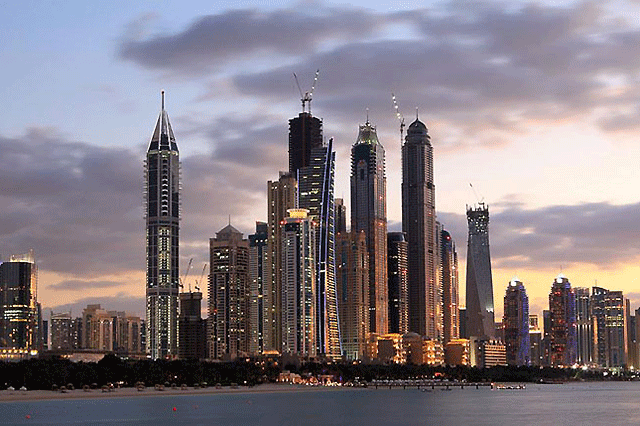

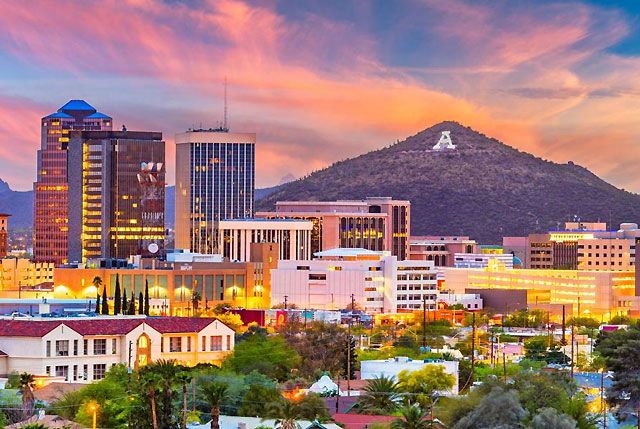
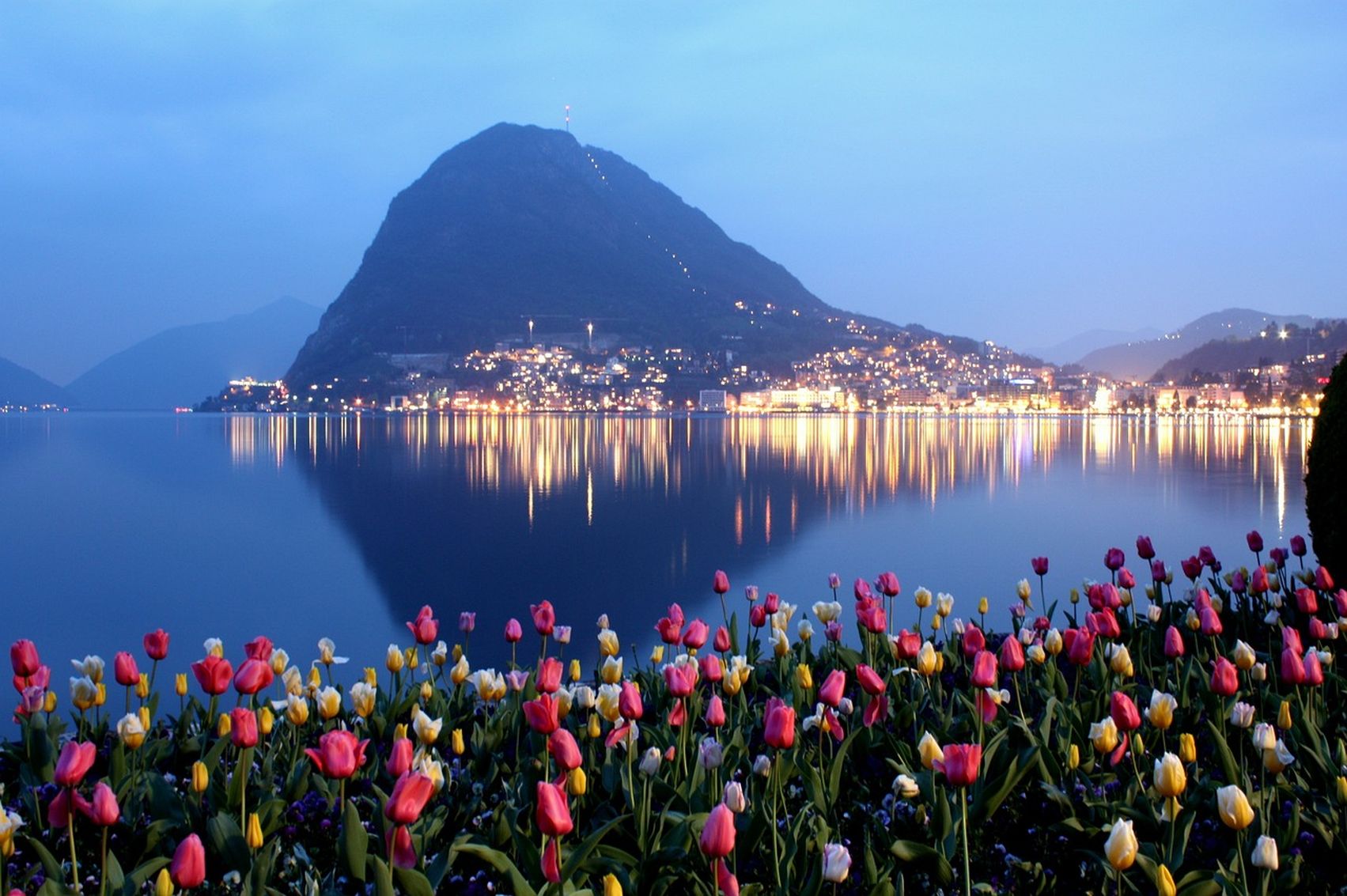
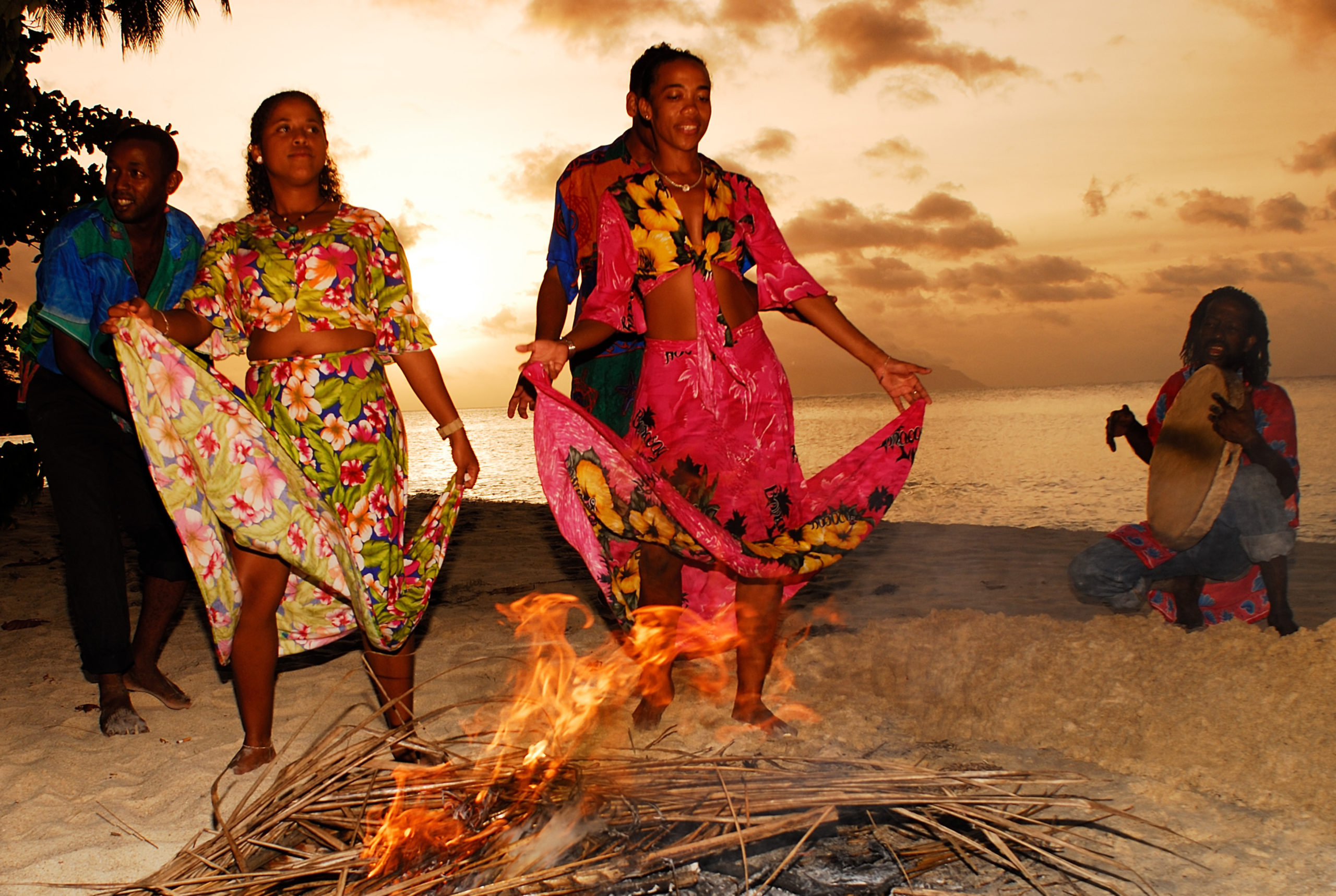
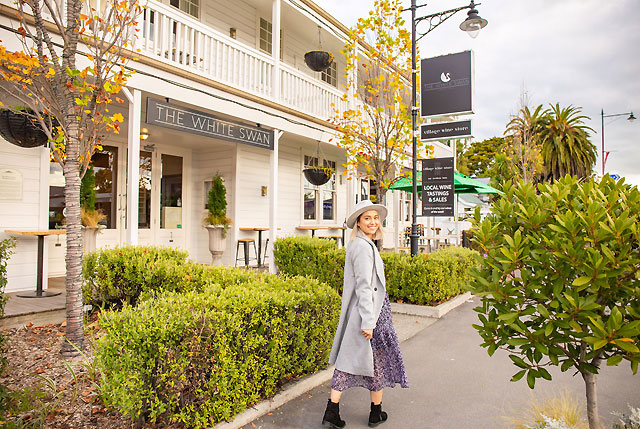
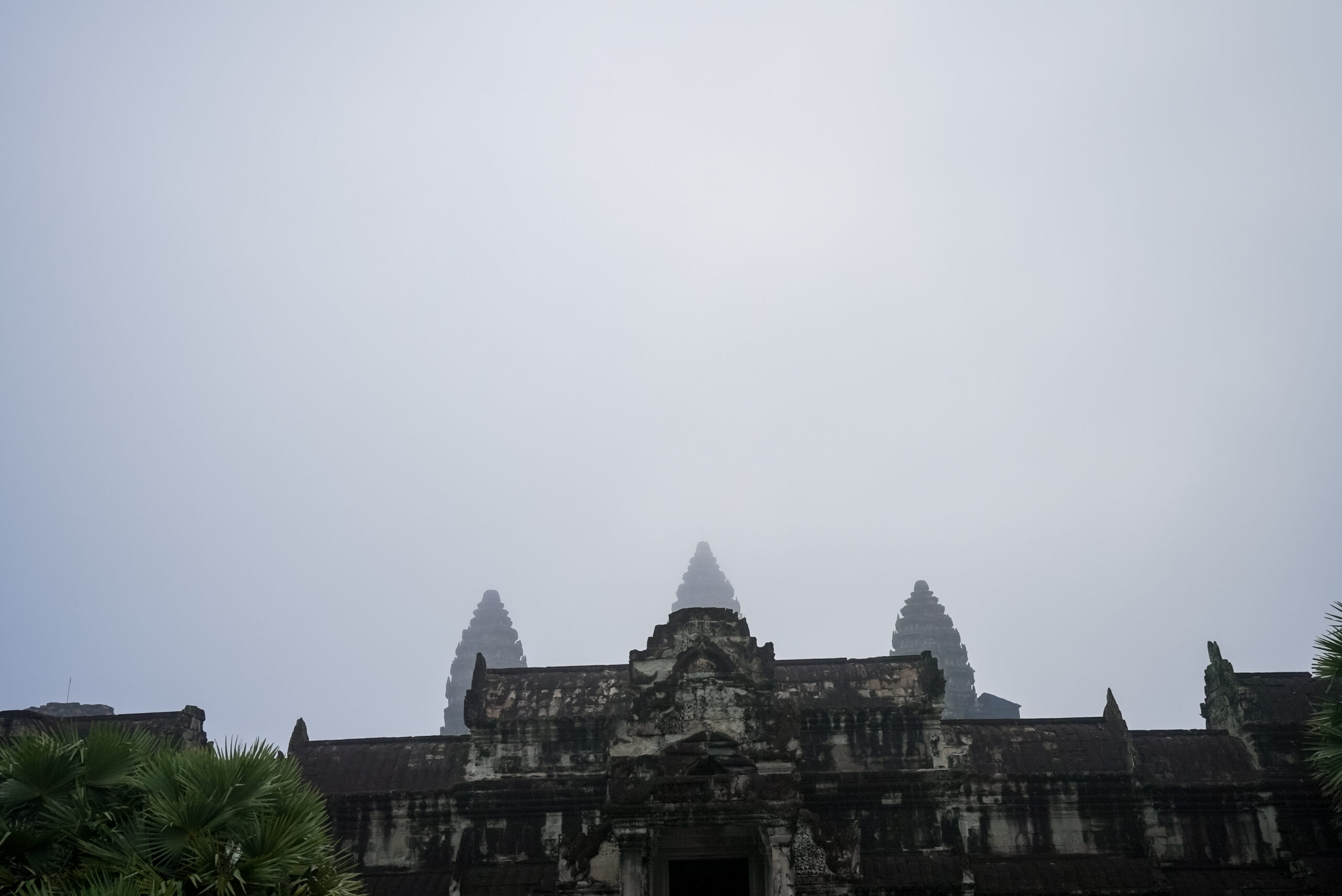
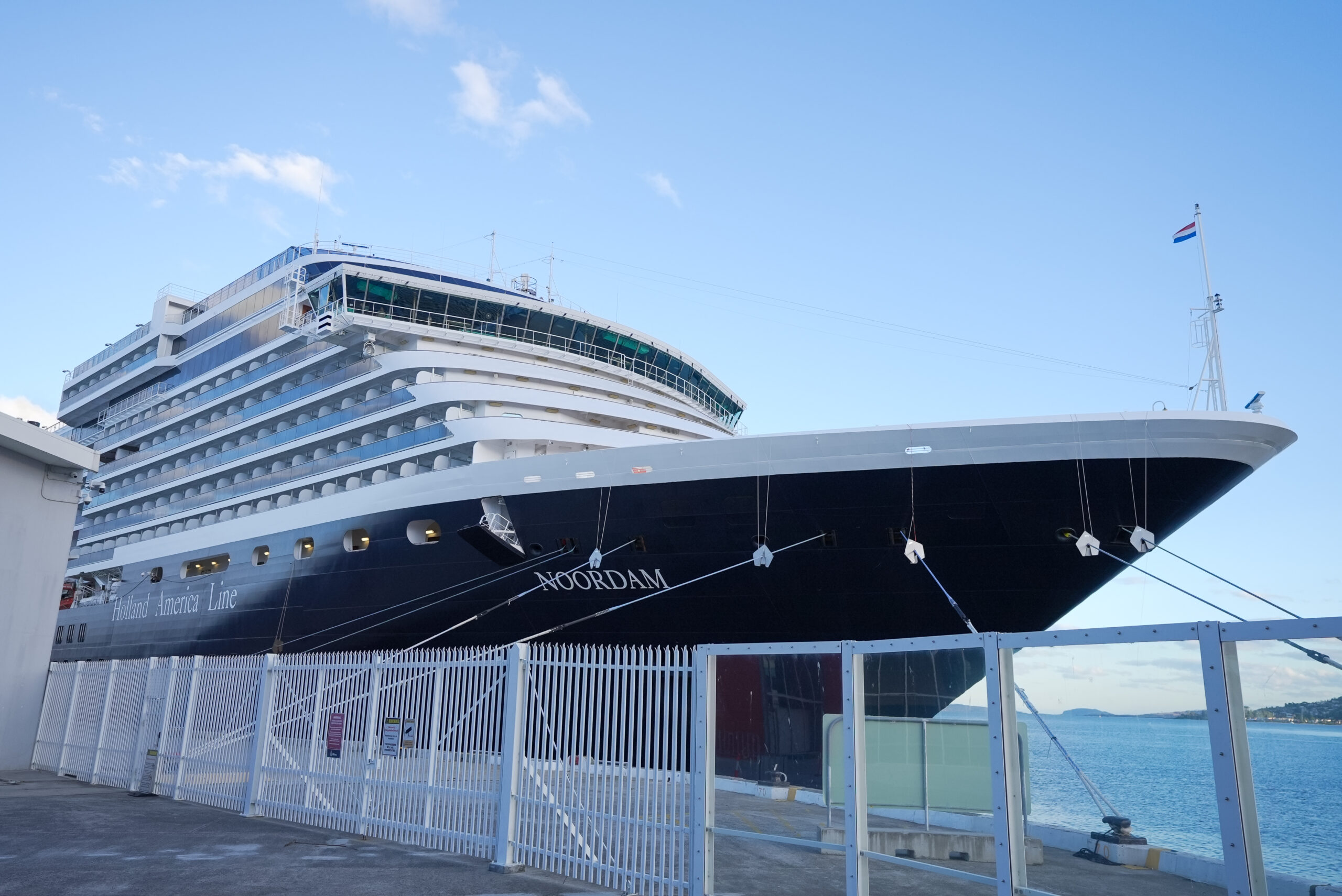
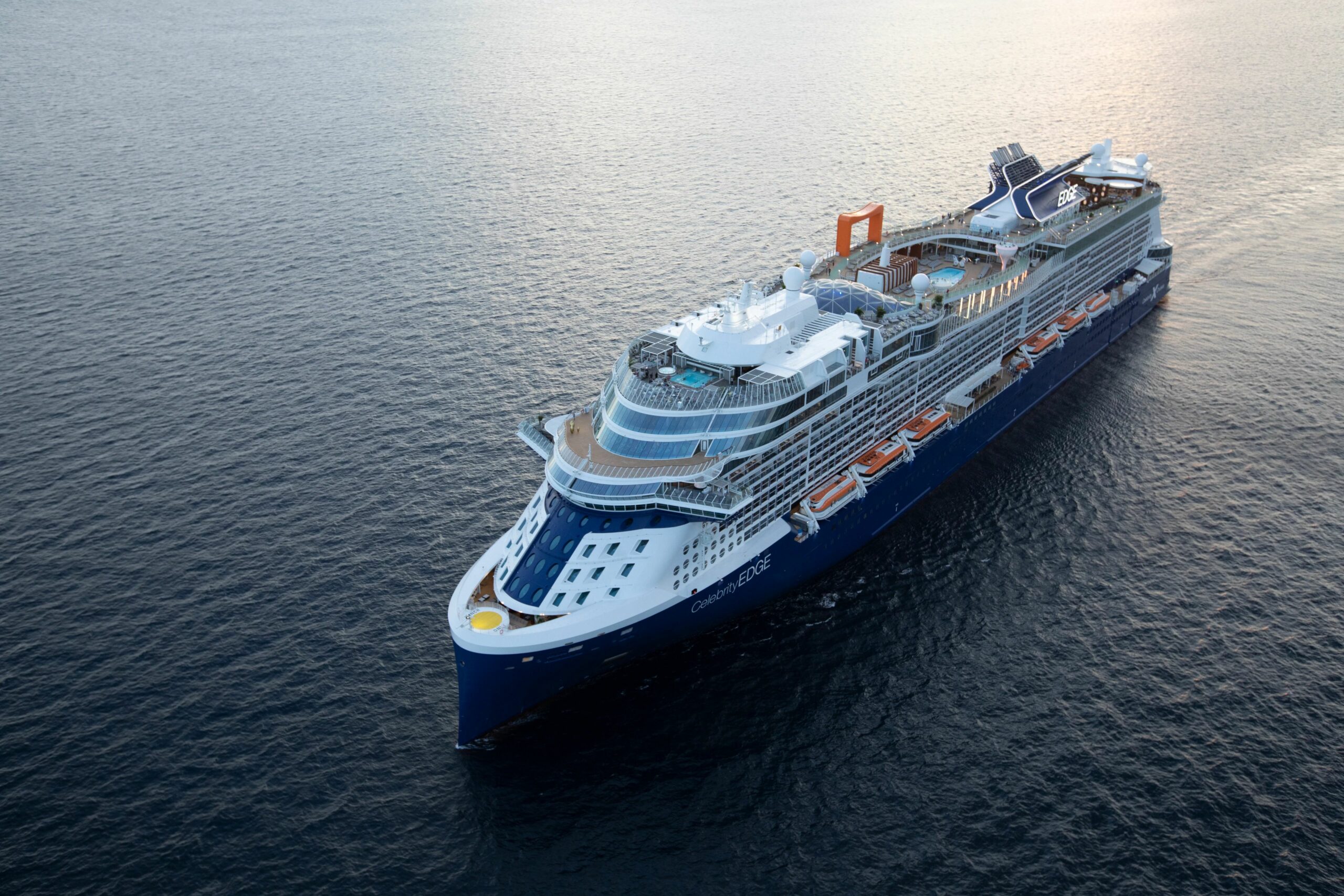

Recent Comments